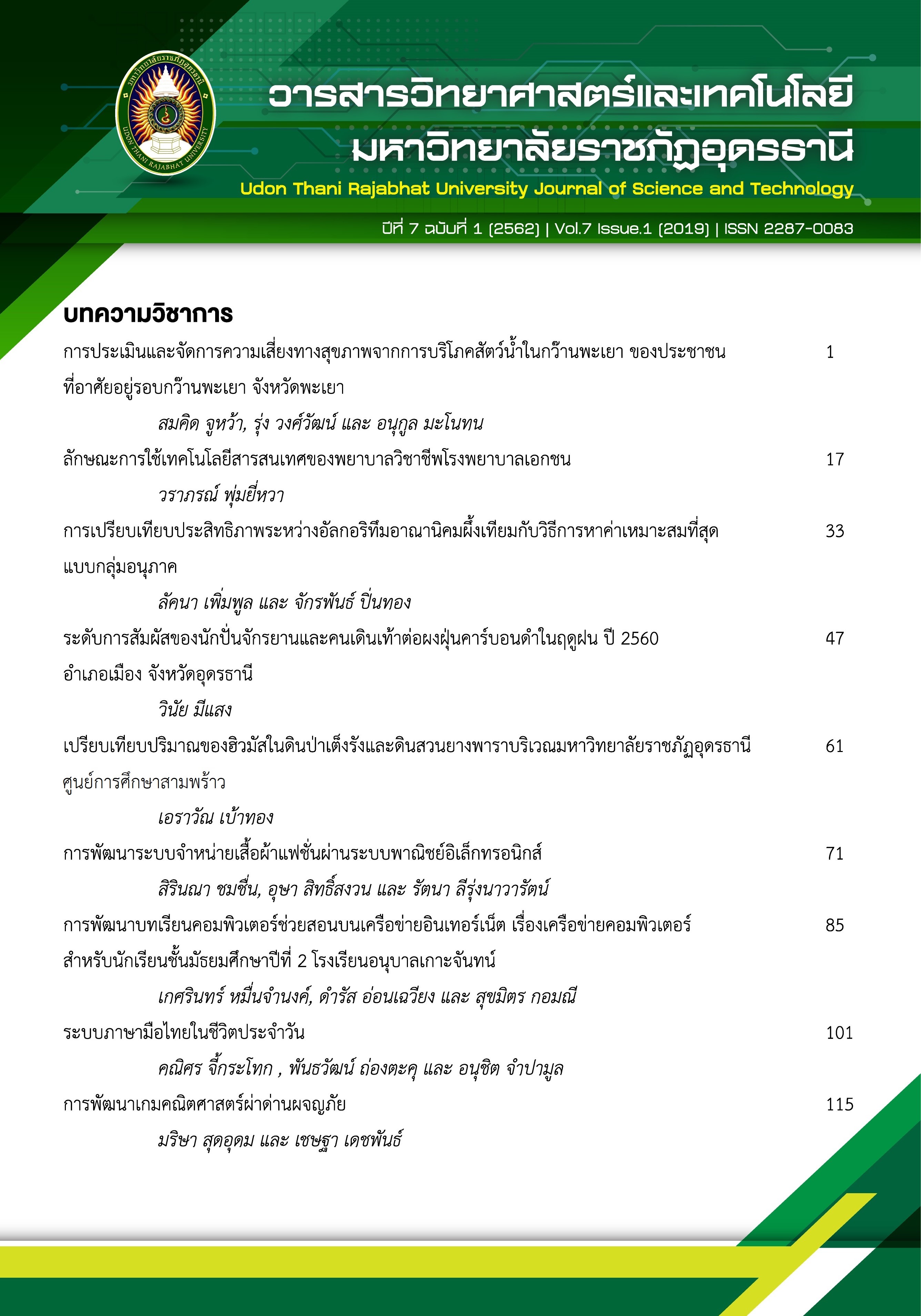HEALTH RISK ASSESSMENT AND MANAGEMENT FROM AQUATIC ANIMAL CONSUMPTION IN KWAN PHAYAO OF PEOPLE LIVING AROUND KWAN PHAYAO, PHAYAO PROVINCE
Main Article Content
Abstract
The purposes of this research were to study food consumption pattern, food consumption behavior, and conduct health risk assessment and management from aquatic animal consumption in Kwan Phayao, Phayao Province, compared with the acceptable daily intake (ADI). Analysis of cadmium (Cd) and Lead (Pb) content in 6 aquatic animals (Macrobrachium lanchesteri, Filopaludina martensi, Clarias batrachus, Oreochromis niloticus, Monopterus albus and Channa micropeltes) indicated that cadmium was detected in Macrobrachium lanchesteri, Filopaludina martensi accounted to 0.0480 and 0.0200 mg/kg respectively. Moreover, lead concentrations (0.0325 mg/kg) were found in 3 aquatic animals including Macrobrachium lanchesteri, Filopaludina martensi and Clarias batrachus. Health risk assessment from Macrobrachium lanchester and Filopaludina martensi consumption with cadmium contamination showed a hazard quotient equaled to 0.27 and 0.11 respectively, and also the fact that average lead intake from aquatic animal was about 5.70 μg/day, lower than the TDI for about 36 fold (TDI of 3.60 μg/day body weight/day). In conclusion of this study, adverse health effects may not occur. Health risk management should be continued to monitor the contamination of cadmium and lead in aquatic animals and the environment consistently, as to act as a public health surveillance.
Article Details
References
สำนักงานนโยบายและแผนสิ่งแวดล้อม. (2560). พื้นที่ชุ่มน้ำที่มีความสำคัญระดับนานาชาติ. สืบค้นเมื่อ 9 มีนาคม 2560, จาก https://wetland.onep.go.th/NongLengsai.html
สำนักงานสาธารณสุขจังหวัดพะเยา. (2559). สรุปผลการดำเนินงานประจำปี 2559. จังหวัดพะเยา
อรุณศรี ปรีเปรม, บังอร ศรีพานิชกุลชัย, วันเพ็ญ วิโรจนกูฏ และ ประภาส โฉลกพันธ์รัตน์. (2550).โลหะหนักในปลาน้ำจืดในแม่น้ำพองและชี. วารสารวิจัย มหาวิทยาลัย ขอนแก่น, 12(4), 420-430.
Agency for Toxic Substances and Disease Registry (ATSDR). (2007). Toxicological profile for lead. Retrieved 2 January 2016, from: https://www.atsdr.cdc.- gov/toxprofiles/tp13.pdf.
Botkin and Keller. (2007). Biomagnifications. Accessed on January 20, 2017, from https://dspace.ist.utl.pt/bitstream/2295/50876/1/Saude_riscos_e_toxicologia.pdf.
Codex Alimentarius Commission. (2006). Joint FAO/WHO Food Standands Programme. 29th Session International Conference Centre. Retrieved 2 January 2016, from: www.fao.org/input/download/report/657/al292e.pdf.
Food Standards Agency. (2008). Front of pack nutritional signpost labelling technical guide issue. Retrieved 20 January 2017, from: https://www.food.-gov.uk/multimedia/pdfs/frontofpackguidance2.pdf.
Joint FAO/WHO Expert Committee on Food Additives (JECFA) (2000). Safety evaluation of certain food additives and contaminants. Retrieved 5 January 2016, from: https://www.inchem.org/documents/jecfa/jecmono/ v46je01.htm.
Page, N. P. (1994). Human health risk assessment. Florida: CRC Press, Boca Raton.
United States Environmental Protection Agency. (2000). Guidance for assessing Chemical contaminant data for use in fish advisories. Retrieved 25 January 2017, from: https://www.epa.gov/sites/Production/files/2015-06/documents/volume2.pdf.
World Health Organization. (1992). IPCS Environmental Health Criteria 134: Cadmium. Retrieved 5 January 2016, from:https://www.inchem.org/ documents/ehc/ehc/ehc134.htm.
Yamane, T. (1973). Statistics: An Introductory Analysis. 3th ed. New York: Haper and Row.


